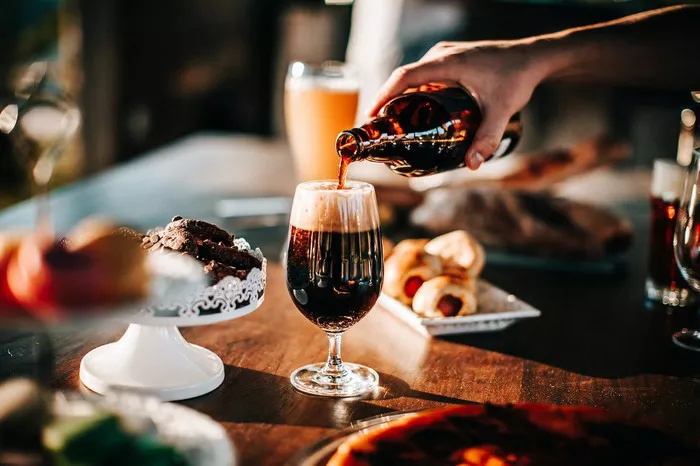Sparkling wine, with its effervescent charm and celebratory appeal, often graces our tables during joyous occasions. However, once the bottle is uncorked, maintaining its freshness and effervescence becomes crucial to savor its delightful taste over time. Knowing how to keep sparkling wine fresh after opening is essential for prolonging its quality and preserving those delightful bubbles. From the right storage techniques to innovative preservation tools, here are expert strategies to ensure your sparkling wine retains its sparkle long after the cork pops.
Understanding Sparkling Wine Preservation:
Before diving into preservation methods, understanding the science behind sparkling wine freshness is fundamental. Unlike still wines, sparkling wine contains dissolved carbon dioxide, creating those effervescent bubbles. Once the bottle is opened, the carbon dioxide begins to escape, leading to a loss of fizz and altering the wine’s taste and texture. Oxidation further impacts its flavor profile, making it imperative to minimize both factors to retain its freshness.
Chill and Store Properly:
The first step in preserving sparkling wine after opening is ensuring proper storage. Immediately after opening, reseal the bottle tightly with a sparkling wine stopper. Then, store it upright in the refrigerator. The cold temperature slows down carbon dioxide escape and oxidation, preserving the wine’s effervescence and flavor. Aim to consume the wine within 1-3 days of opening for optimal freshness.
Utilize a Wine Stopper:
Investing in a high-quality wine stopper specifically designed for sparkling wines can be a game-changer. These stoppers feature a clamp mechanism that securely seals the bottle, preventing excessive carbon dioxide from escaping. Look for stoppers made of durable materials like stainless steel or silicone, ensuring an airtight seal to retain the bubbles.
Avoid Shaking the Bottle:
Once opened, handle the sparkling wine bottle delicately and avoid shaking it vigorously. Agitating the bottle causes the release of more carbon dioxide, leading to quicker loss of fizz. Gently pour the wine into glasses to minimize disturbance and preserve its effervescence.
Use a Vacuum Sealer:
Vacuum sealers are versatile tools for preserving wine, including sparkling varieties. These devices remove air from the bottle, creating a vacuum that slows down oxidation. Some vacuum sealers come with specialized stoppers suitable for sparkling wines. While these tools might not maintain the bubbles as effectively as other methods, they can extend the wine’s shelf life by reducing oxidation.
Refrigerate with Care:
While refrigeration is essential, ensure you refrigerate sparkling wine correctly. Avoid placing the bottle in the door compartments where temperature fluctuations occur frequently. Instead, store it on a shelf inside the refrigerator, maintaining a consistent and cooler temperature. Extreme temperature changes can accelerate the loss of carbon dioxide and alter the wine’s taste.
Explore Carbon Dioxide Sprays:
Innovative products like carbon dioxide sprays offer an intriguing solution to maintain sparkling wine freshness. These sprays reintroduce a controlled amount of carbon dioxide into the bottle after pouring, revitalizing the bubbles and preserving the wine’s effervescence. While not as common as other preservation methods, they can be a valuable tool for extending the life of your sparkling wine.
Consider a Champagne Stopper:
Champagne stoppers, designed specifically for Champagne and sparkling wine bottles, provide an airtight seal, effectively preserving the bubbles. These stoppers feature a lever that clamps onto the bottle neck, ensuring a secure closure. Opt for quality stoppers made of materials like stainless steel and silicone for optimal preservation.
Limit Exposure to Air:
Minimizing the wine’s exposure to air is crucial for preserving its effervescence. To achieve this, pour smaller quantities into glasses, ensuring the remaining wine in the bottle retains its freshness. Re-seal the bottle immediately after pouring to limit contact with oxygen, which can accelerate the wine’s deterioration.
Utilize Preservation Capsules:
Preservation capsules, often used for Champagne, provide a barrier between the wine and oxygen. These capsules sit atop the bottle’s neck, acting as a shield against air exposure. While they may not fully maintain the wine’s effervescence, they help extend its lifespan by slowing down oxidation, allowing you to enjoy the sparkling wine over multiple sittings.
Store in a Wine Fridge:
For wine enthusiasts seeking a dedicated solution, investing in a wine fridge equipped with specific compartments for sparkling wine storage is an excellent choice. These fridges maintain optimal temperature and humidity levels, ensuring the wine stays fresh for a more extended period. Temperature consistency is crucial for preserving the wine’s effervescence and flavor.
Re-cork with Precision:
If you don’t have a sparkling wine stopper on hand, re-corking the bottle carefully can still help preserve some of the bubbles. Use the original cork or a new sparkling wine cork if available. Ensure a tight seal by gently pressing down the cork to minimize carbon dioxide escape. Although not as effective as specialized stoppers, this method can help extend the wine’s freshness to some extent.
Conclusion:
Appreciating the effervescence and flavor of sparkling wine is a delightful experience, and knowing how to keep it fresh after opening ensures that every glass retains its charm. By employing proper storage techniques, utilizing innovative preservation tools, and minimizing exposure to air, you can savor the effervescence of your favorite sparkling wine over multiple occasions. Whether it’s a crisp Champagne or a lively Prosecco, these expert tips will help you enjoy every bubble until the last sip. Cheers to preserving the sparkle in your sparkling wine!


